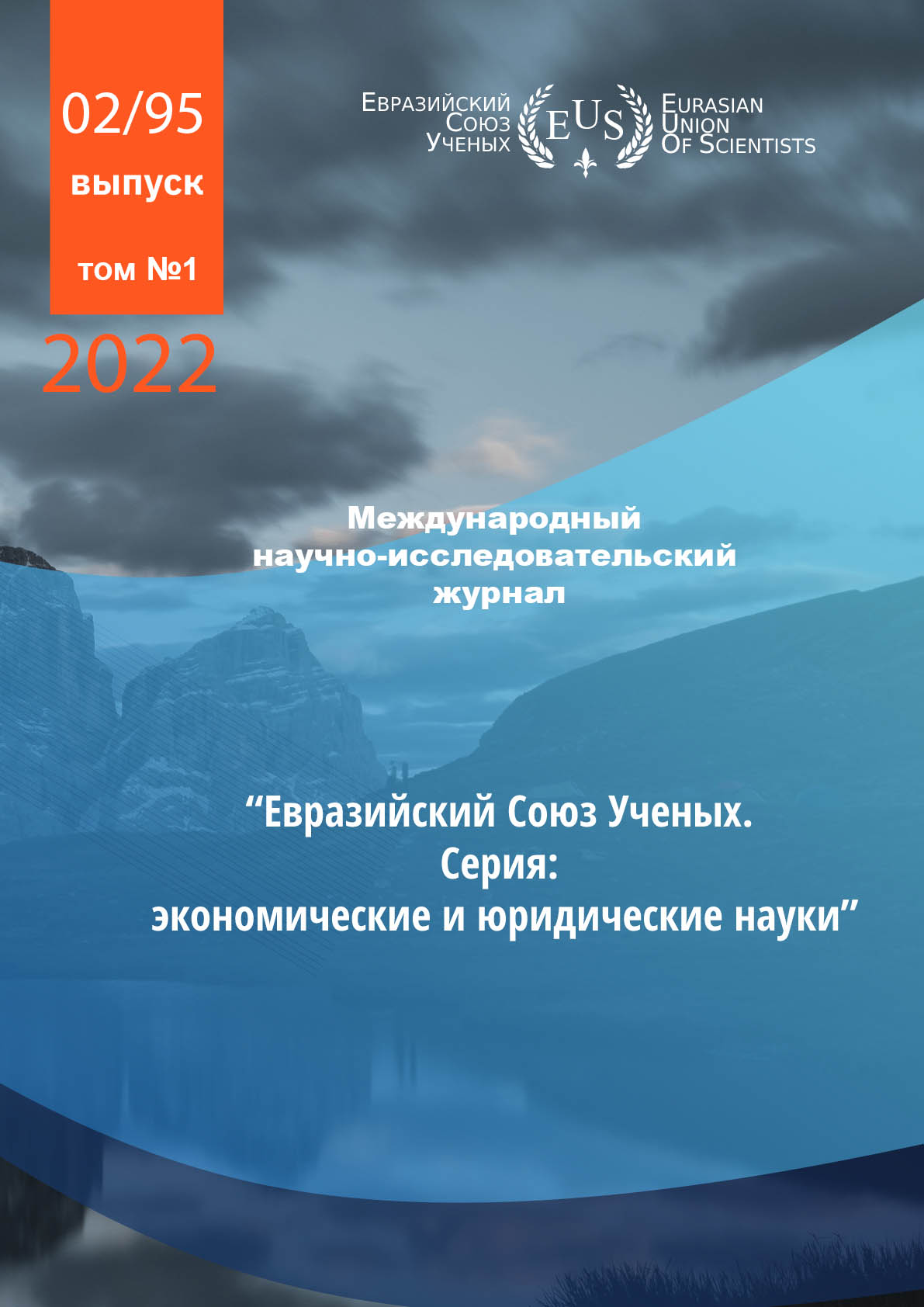STATUTE OF LIMITATIONS AS A PERIOD OF JUDICIAL PROTECTION OF THE VIOLATED RIGHT.
Abstract
This article is devoted to the study of the scientific question of the duration of the substantive right of a person
to protect his subjective right in case of violation. The article analyzes the legal essence of the statute of limitations
in civil law. The content of the subjective right of a person to legal protection through the application of the statute
of limitations and compliance with the essence of the relationship of the normative rule on the application of the
statute of limitations. There is a thesis according to which it is necessary to distinguish legal concepts of term for
protection and statute of limitations. The first should be considered as a general phenomenon, while the second is
only an element of the subject's authority to sue. The statute of limitations does not determine the duration of
human rights actions, it only limits in time the only power of the right holder - to go to court. Since the thesis that
the expiration of the statute of limitations does not entail the termination of the substantive legal relationship seems
indisputable in civil doctrine today, the problem of termination of legal obligation and the corresponding subjective right has been studied. It is established that after the expiration of the statute of limitations, the substantive law cannot be enforced, but it, without ceasing in content, acquires the so-called "natural" nature.
The paper analyzes the approaches of civilians to solving the problem, provides scientific concretization and
refinement of the concept of the interaction of general temporal characteristics of the protective relationship, which
arises from the moment of violation and ends after the cessation of the offense, and the statute of limitations.
occurs after the end of its course. In this sense, the position is criticized that the term of existence of civil law, and
hence the period of its protection, depends on the decision of the court, which is satisfied or not satisfied the
requirements for the protection of this right. In fact, this is not the case. The entry into force of a court decision
denying a creditor a claim in connection with the omission of the limitation period, as well as the expiration of the
statute of limitations, have the same effect: these legal facts do not terminate the protective obligation. The debtor's
obligation to act in favor of the creditor continues, which in turn means the legitimacy of voluntary enforcement
after the court has rejected the claim due to the expiration of the statute of limitations. In addition, this approach
does not solve the question of how to calculate the duration of the right, when the entitled person does not go to
court to protect it. It is proposed to separate the legal mechanism of litigation and its temporal criteria from the
general process of protection of rights. It should be borne in mind that after the expiration of the statute of
limitations, the substantive right to sue is extinguished, but the subjective right itself continues to exist. Also in the
work the specification of this well-known postulate is made: the existence of not a regulatory legal relationship,
but a protective one continues.
References
2. Guyvan P.D. Theoretical questions of terms in private law: monograph. Kharkiv: Pravo, 2014. 632 p. 28 Evrazijskij Sojuz Uchenyh. Serija: jekonomicheskie i juridicheskie nauki. #2(95), 2022
3. Luts V.V. Terms of protection of civil rights. Abstracts of lectures from the special course. Lviv: LGU, 1993. 60 p.
4. Kirillova M.Ya., Krasheninnikov P.V. Deadlines in civil law. Statute of limitations. M. : Statut, 2006. 48 p.
5. Gribanov V.P. Limits of exercise and protection of civil rights. M .: Izdatel'stvo MGU, 1972. 284 s.
6. Cherepakhin B.B. Controversial issues of the concept and action of the statute of limitations. Sovetskoe gosudarstvo i pravo. 1957. №7. Pp. 62-70.
7. Novitsky I.B. Deals. Limitation of actions. M.: Gosjurizdat, 1954. 247 p.
8. Ioffe O.S. Soviet civil law. Lecture course. [Ch. I] General part. Ownership. General Doctrine of Commitments: Textbook for Higher. legal textbook
institutions. Leningrad. state un-t. - L .: Leningrad Publishing House, 1958. 511 p.
9. Kirillova M.Ya. Limitation of actions. M .: Juridicheskaja literatura, 1966. 156 p.
10. Gribanov V.P. Exercise and protection of civil rights. M .: Statut, 2000. 411 s.
CC BY-ND
A work licensed in this way allows the following:
1. The freedom to use and perform the work: The licensee must be allowed to make any use, private or public, of the work.
2. The freedom to study the work and apply the information: The licensee must be allowed to examine the work and to use the knowledge gained from the work in any way. The license may not, for example, restrict "reverse engineering."
2. The freedom to redistribute copies: Copies may be sold, swapped or given away for free, in the same form as the original.







